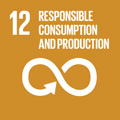- Docente: Giovanna Marchianò
- Credits: 7
- SSD: IUS/10
- Language: Italian
- Teaching Mode: Traditional lectures
- Campus: Bologna
-
Corso:
Single cycle degree programme (LMCU) in
Law (cod. 9232)
Also valid for Second cycle degree programme (LM) in Law and Economics (cod. 9221)
Learning outcomes
The course aims to provide students with the knowledge of international, European and national public legal regulation of environmental law, with particular reference to the real and effective impact of the sector disciplines on the concrete development of entrepreneurial activity. In this context, the Community Regulations on environmental matters will be examined, with particular reference to the effects that these provisions have on national law. This aspect is also consistent with the subject of teaching held by the same Professor in the EPELM Degree Course which, more generally, pertains to administrative regulation in the Community market.
In the framework of the teaching on environmental protection, the student will have the opportunity to acquire knowledge related to the transition from a linear economy to a circular economy, with reference both to European directives and to the opportunities that these directives may have on the internal organization Italian as well as on the role of the Regions in the matter. The focus will therefore be on developing a sustainable economy that tends to make waste a resource and not a problem.
The Course is closely linked to one of the "Objectives for Sustainable Development (SDGs) of the UN" and in particular to the number 12 RESPONSIBLE CONSUMPTION AND PRODUCTION: - waste production and management (prevention, reduction, recycling, re-use) - Green economy ( "From the cradle to the cradle" circular economy, green growth, decrease).
Course contents
1. The legal protection of the environment at international level (in particular WTO)
2. The legal protection of the environment at European level (in particular the Treaty and Single European Act): from the dimension of the environmental policy of the Union in the judgments of the Court of Justice and their effects on national companies
2.1 “Eco-competitive” economic actors, public aid and green payments, the
Community Eco-Management and Audit System (EMAS - Eco Management
and Audit Scheme)
3. The legal protection of the environment at national level: the constitution, the codification of environmental law (in particular the environmental code), regional and local sources
3.1 Market instruments and environmental protection: green tenders, subsidies, and
permits negotiable certificates
3.2 Specific procedures: VIA, VAS, AIA, AUA. Limits to simplification
3.3 The seriousness of the administrative bureaucratic procedures for the entrepreneur: administrations as an obstacle or as a balancing moment for interests
4. The principle of sustainable development: the transition to a circular economy system in order to minimize waste and to respond to both environmental and economic / social needs. In particular, reference will be made to certain materials such as plastic, glass and packaging, which today represent the first examples for a different use of waste.
5. Economic freedom in the framework of the regulation of electricity from renewable sources
Readings/Bibliography
Il diritto dell'ambiente, edited by B. Caravita, L. Cassetti, A. Morrone, Il Mulino, 2016 (in any case the last edition).
In particular, the student will focus on these chapters:
Part one
I: Environment and constitution
II: Environment and its borders
III: The sources of environmental law
Second part
V: European Union and the environment
VI: The competences of the state administration
VIII: The system of local authorities in environmental matters
Part Four
XIX: Environmental information
XXI: Integrated authorization procedures
XXIII: Environmental damage and protective measures
XXIV: Economic instruments for environmental protection
Raccommend the optional reading of the professor's article being ublished by the title Regolazione dell'energia elettrica da fonte rinnovabile in particolare nei terreni agricoli
Teaching methods
With regards to the teaching methods, the lectures will alternate with the presentation of papers by the students on a specific theme agreed with the Professor. The Professor will try to stimulate the debate among the students on the subject dealt with. Support material for the preparation of papers can be found by students on the Professor's personal website. This will have the aim of allowing the student to acquire exhibition skills in order to give rise to a debate that may involve the whole class. This method is subject to the evolution of the health situation as well as to the type of course procedure.
Assessment methods
The exam will be oral and, for attending students, the paper presented by the student during the lessons will also be examined, whose impact on the final grade will be 30%. The examination methods indicated may be subject to changes based on the evolution of the health situation.
Teaching tools
In addition to the textbook, it will be the Teacher's responsibility to make the additional material the Course requires available to the student in electronic format on their website.
Office hours
See the website of Giovanna Marchianò
SDGs

This teaching activity contributes to the achievement of the Sustainable Development Goals of the UN 2030 Agenda.
